Beth Tabler's Blog, page 218
September 2, 2021
Review – The Lost Queen by Signe Pike
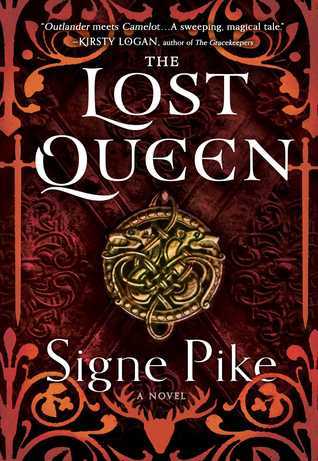 check it out here
check it out here BOOK REVIEW
THE LOST QUEEN by SIGNE PIKE September 2, 2021 10:00 am No Comments Facebook Twitter WordPress “I have been a drop in the air. I have been a shining star. I have been a word in a book. —“Cad Goddeu” (“The Battle of the Trees”), translated by Robert Graves, The White Goddess”The Lost Queen, the first book of The Lost Queen Trilogy, by Signe Pike, is a very well-written and well-executed novel.
As those who have read previous reviews of mine are aware, I am a huge fan of Arthurian legend, preferring a large dose of “authenticity” (so based as closely to “fact” as possible) thrown along with my Excalibur and my Round Table. So I was drawn to this book immediately. Another aspect of the tales of Arthur that I enjoy, is when the main protagonists are not the traditional popular mainstays, such as Arthur himself, Lancelot, Merlin, etc. I love getting to know about the other colorful characters that helped compose Arthurian lore.I am pleased to say, the author delivered. Like some of my favourite books in this sub-genre, such as Bernard Cornwell’s The Warlord Chronicles with Derfel, and Natania Barron’s Queen of None with Anna, The Lost Queen gives us a strong main character of Langoureth, who many readers who have read any other books about the Once and Future King would be hard pressed to know anything about.
The story revolves around the wars occurring in Britain at the time, where the courageous general Emrys Pendragon, leader of the Angle resistance, rises to power, fighting to try to preserve the old Briton way of life against the encroaching Christian kingdoms. One of Emrys’ commanders, Maelgwn, and Languoreth, who is the daughter of Morken – a petty king/high chieftain of Goddeu in Strathclyde – fall for each other. Unfortunately, Languoreth is betrothed to Rhydderch, son of the Britons’ High King of Strathclyde – Tutgual – who espouses the cause of Christianity, clashing with Langoureth’s own beliefs.
One of the facets of this novel that stands out for me is the precise and (after my own digging) seemingly quite accurate research into 6th century Scotland, which is the setting for the novel. Most esteemed historians agree that, if there was an Arthur, King of Britons, who was a famous warlord that won great battles and, at least partially unified British tribes of the era, that he lived in the 6th century. The author, Pike, has a unique retelling of Arthurian lore, yet grounded in a lot of solid fact, such as it exists about the legend of Arthur and his compatriots. The novel’s protagonist, the noblewoman Langoureth, is a little-known figure for most readers of the Arthur legendarium, but her tale is fascinating, as the sister to the man who will become Merlin (Lailoken in the novel). I give full marks to Pike for the level of effort to achieve some measure of historical accuracy, while maintaining wonderful, fantastical elements in her novel. The combination is a winner!
Like most of my favourite reads, The Lost Queen is first person, and character driven. Langoureth is intelligent, fiery, courageous, and sometimes willful and obstinate. Her decisions can potentially frustrate the reader, but they are still understandable given context. I truly enjoyed this character, as will readers who crave strong female leads. The secondary characters are excellent, and I found in particular the tender relationship between Langoureth and her father Morken heart-warming.
There are some tear-jerking moments, and one of the things that struck me about the book was the stark sacrifices that the women of the era are compelled to make, up to and including the cost of their very lives. A theme that I am very cognizant of is the uncertainty of life, especially in medieval times, including dynastic arranged marriages (most often forced upon the women, but also the men) and the dangers of childbirth posed to women of that period. In the 21st century we tend to take safe childbirth for granted – this was definitely not the case in the early centuries of recorded history.
The magical aspects in the book are centered predominantly around enchantments, and healing, which is aided through herbalism / botany. I liked seeing Pike’s version of Merlin’s origins, and how his sister Langoureth was an important influence in his upbringing. Many people tend to associate Merlin the sorcerer with the most magical aspects of Arthrurian mythology, but in the novel we also see Langoureth as being central to the theurgy of the tale. The contrast and conflict in The Lost Queen between the old pagan gods and the new emerging Christian God, is compelling, and well-done. Overall I give Pike and “A” for how magic is approached in her novel.
Political intrigue in the form of court politics abounds, as different clans vie for supremacy. Langoureth is caught up in the whirlwind of powerful, competing interests, but she is no passive player. She exerts what influence she has, when she can, and is resolved in her loyalty and support for those she loves. She refuses to be just a pawn in the unfolding events: instead she is determined to be a player.
The romance is fairly intense, but I think handled very well, and not gratuitous. I am a fan of romance, and find it really enhances a sense of realism in any book.
This book is very much a “slow-burn”, and I enjoy the languid pace, though some may not. Pike takes care and time fleshing out plot and characters, and those craving grand-scale epic battle scenes, look elsewhere. Regardless, there is certainly enough drama, action, attention to detail, wonderful prose, and interesting characters, to keep the reader engaged.
I am a sucker for Pike’s blend of well fleshed out characters, intrigue, worldbuilding, and oh, some hot and heavy romance.
I thoroughly enjoyed The Lost Queen and will pick up the sequel as soon as I can. Check Out some of our other reviews
Review – The Final Girl Support Group by Grady Hendrix
P.L. Stuart
I’m an experienced writer, in that I’ve been writing stories all my life, yet never thought to publish them. I’ve written informally – short stories – to entertain friends and family, for community newspapers, volunteer organization magazines, and of course formal papers for University. Now, later in life, I’ve published what I believe is a great fantasy novel, and definitely worth reading, called A Drowned Kingdom. My target audience is those who enjoy “high fantasy”. A Drowned Kingdom is not “dark fantasy”. It’s written in a more idealized and grandiose style that I hope isn’t too preachy, and not too grim. Still, I’m hoping my book has appeal to those who don’t typically read this type of work – those who don’t read fantasy of any kind – because of the “every-person” themes permeating the novel: dysfunctional familial relationships, extramarital temptation, racism, misogyny, catastrophic loss, religion, crisis of faith, elitism, self-confidence, PTSD, and more.
Many of these themes I have either personal experience with, or have friends or family who have dealt with such issues. I’ve had a long professional law enforcement career, undergone traumatic events, yet been buoyed by family, faith, and positivity. I’m a racialized middle-aged man. I’ve seen a lot of life. Ultimately I want the planned series, of which A Drowned Kingdom will be the introduction, to be one of hope, and overcoming obstacles to succeed, which I believe is my story as well. My protagonist, Othrun, will undergo a journey where he’ll evolve, change, and shape a continent. He’s not always likeable. He’s a snob, bigot, is vain, yet struggles with confidence. He’s patriarchal. Overall, he’s flawed. But even ordinary flawed people can change. We’re all redeemable.
Ordinary people can make a difference, not just fictional Princes. I want that message to shine through my work.
WHERE TO FIND HIMTwitter – @plstuartwrites
Facebook – @plstuartwrites
If You Liked This - Please Share the LoveSeptember 1, 2021
Review – Tropical Punch by S.C. Jensen

 check it out here
check it out here BOOK REVIEW
tropical punch by s.c. jensen September 1, 2021 10:00 am No Comments Facebook Twitter WordPress "Strippers, Drugs, and Headless Corpses…All in a day’s work for Bubbles Marlowe, HoloCity’s only cyborg detective.?”TROPICAL PUNCH is the first novel of the BUBBLES IN SPACE books that star Bubbles Marlowe, a recovering alcoholic ex-cop with a cybernetic arm. Bubbles lost her arm when she tried to bring in a drug dealer with knowlege of corruption on the force and ended up blown up for her trouble. Reinventing herself as a private detective, she finds herself neck deep in the same trouble that got her blown up since her former boss is out for her blood.
Tropical Punch opens with Bubbles screwing up her latest assignment to protect a young woman, finding her dead before her arrival. It gets weird when an identical doppleganger shows up minutes later, only for her to be killed as well. Almost killed by the assassin, Bubbles barely makes it back to her office and discovers that she has won a all-expenses paid space cruise. Which is strange because she didn’t enter the contest she’s supposed to have won.
This is an interesting cyberpunk novel and very much not of the mainstream as it is an indie self-published work available on Kindle Unlimited. I always like reading indie books because there’s nothing that feels more appropriate for cyberpunk than a work written outside of mainstream publishing. While lighter and softer than a lot of fiction set in the genre, it is still capable of tackling pretty dark subject matter. It’s more the way it’s all presented that makes it fun rather than depressing.
N.K. Jensen is an author who has created a neon noir world that manages to be gritty, punk, and violent yet not really all that dark. Part of this is due to how undefeatably plucky its heroine is. Bubbles’ situation is absolutely terrible but she somehow manages to bounce from bad to worse without ever losing her pluck. There’s also a great deal of humor in this book as well. My favorite scene being where Bubbles asks if there’s any superpowers or special features of her new cybernetic arm, only to find out its biggest features are that it gives her a month of free aps for all her favorite media.
The cruise ship section of the book is probably the best with Bubbles struggling to fit into the ultra-posh and ridiculously pricey world of high end tourism. As someone who worries about keeping the lights on and not losing her home, she finds the excess on display to be bewildering as the rich truly are their own species in her world. At one point, she meets a semi-sane cosmetics baron who wants to hire her to sabotage the competing product roleout happening on the cruise. Bubbles has no response to the fact he assumes she’s a merc for hire.
The villains are a suitably hatable bunch with grand transhumanist dreams as well as incredibly slimy methods. It’s kind of hilarious that Bubbles has no interest in stopping any of them or desire to solve crimes on her vacation. She’s more interested in the buffet than she is being a hero. However, events conspire that she has to solve the crimes going on or she’s going to be killed by her insane ex-chief, Swain. It adds to the absurdity of the situation that Swain forces Bubbles to fight back as its the only way to survive.
In conclusion, this is a really great novel and a perfect example of modern cyberpunk. Bubbles is a great character, her supporting cast is hilarious, and the villains are boo hiss hateable. It manages to capture the dehumanizing effect of technology while not demonizing it. It is merely the uses that corrupt and greedy put it to use that ruins its value. I am definitely picking up the rest of the series and reading it.
Check Out some of our other reviewsAugust 31, 2021
SPFBO7 Review and Cut – Unstoppable Shadow by Alex Mead
 By Jodie Crump "The action throughout the book was wonderfully written and described, vicious and creative." Unstoppable Shadow by Alex Mead
By Jodie Crump "The action throughout the book was wonderfully written and described, vicious and creative." Unstoppable Shadow by Alex Mead 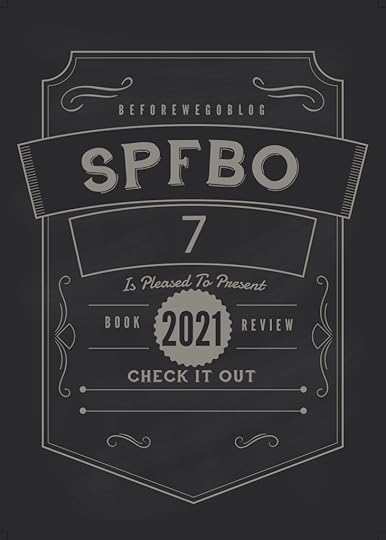
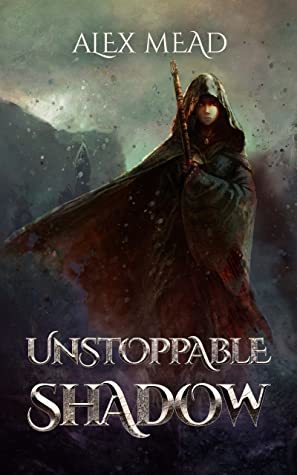 unstoppable shadow by alex mead Buy A Copy Here What is it about?
unstoppable shadow by alex mead Buy A Copy Here What is it about? “Friendless orphan from the slums of Talon, Scab is no ordinary boy. So everyone keeps telling him. He’s pretty sure ‘the Slow’ doesn’t happen to anyone else, but he daren’t ask, in fear of the next beating.
Taken from the city, Scab finds himself closer than ever to having a bed of his own, but it comes at a price. A painful one.
Veteran assassin, Silas is ready for a normal life with a family. Something the Shadows would never allow. Not helping matters, the strange, grey-eyed boy from the slums gives him glimpses of how life might be with a son.
Offering Scab the opportunity to follow the same violent path as his own, Silas finds himself bound tighter to the Shadows. With his future entwined with the boy’s, he’s beginning to wonder if death may be the only way out.
Brutal yet compelling, Unstoppable Shadow was a great book, albeit a difficult read for me. The book is about a boy named Scab, one of many struggling to exist on the streets where no one looks out for kids. He finds an unlikely chance for a new life through assassin Silas, who sees something in Scab that both intrigues and scares him.
Silas rescues Scab, so to speak, but one could argue that Scab moves on to a more dangerous environment than the one he leaves behind, as he learns to cold-bloodedly kill. Scab is terrifyingly good at killing, leaving some to wonder where humanity ends and something monstrous takes its place.
Author Alex Mead set the tone from the get-go, of a brutal and unforgiving world peopled with those desperate enough to do just about anything to survive. Gritty and gory (it is about a young killer, after all), Unstoppable Shadow would be an excellent read for those wanting to take a walk on the darker side of fantasy.
I found Scab to be an interesting character. He balked at killing but rarely, if ever, felt any remorse for the violence he committed. He possessed a talent he referred to as the “Slow”, which is pretty much what it sounds like: things slowed down for him at certain times, allowing him to predict what someone would do and react much faster than he should have been able to. It was a creative talent to read about, made more interesting by Scab’s lack of understanding about how it worked or where he got it.
I was intrigued by the introduction of the characters at the beginning, but the way Scab acquired his name (he isn’t Scab all the way though, getting a new moniker relatively early on) was fascinating. It was at that point that I was truly drawn in. He was such a fantastic combination of survival instincts and a lost child. His character was at times chilling, pitiable, or merciless, sometimes a combination of all three at once.
I appreciated the grittier atmosphere in Unstoppable Shadow. However, the way some of that was established caused my first-and biggest- less than favorable reaction. Now, this is just personal preference, but I try to avoid books that have mentions of rape in them whenever possible. If it is there in a passing sort of way, I can look past it and move on. However, often the word “rapist” or “pedophile” was used to show that a person was horrible.
It worked, of course; it immediately gave me the knowledge that the person described was a monster of the worst kind. It was also incredibly difficult for me to read, especially as this was mentioned quite a lot. Again, this is personal preference, but the multiple references to rape really upset me.
The action throughout the book was wonderfully written and described, vicious and creative. It was never redundant, and I found myself engrossed by the sheer variety of violence the author was able to convey. As I have mentioned above, this is a darker fantasy. It isn’t all doom and gloom, but it definitely manages to tread the line between “dark” and “grimdark” quite well.
The only other thing that threw me from time to time is that every now and again there would be a jump in pacing that could be confusing. For example, Silas (the assassin that found Scab in the first place) suddenly struggled with alcoholism and I couldn’t for the life of me figure out how that started so abruptly. These time jumps (for lack of a better word) rarely happened, though, and in general the pacing was very well done.
I truly enjoyed Unstoppable Shadow, although I do think that it might bother some people who, like me, might struggle with the harshness of content. For readers who appreciate grim worlds and morally gray characters, this book is for you.
Addendum to Original Review:Unfortunately, after giving it a lot of thought, Unstoppable Shadow is a cut. While it is extremely well written and fascinating, the many mentions of rape or pedophilia lessened my satisfaction. That being said, readers who like to walk on the darker side of fantasy should add this book to their “to be read” pile. It’s a great addition to that particular subgenre.
If You Liked This - Please Share the Love Jodie Crump
Jodie Crump is the creator of the Witty and Sarcastic Bookclub blog. She either lives in Florida with her husband and sons, or in a fantasy book-she’ll never tell which.
When she’s not reading, Jodie balances her time between homeschooling her hooligans, playing Dungeons and Dragons, and lamenting her inability to pronounce “lozenge”. Find her online at Witty and Sarcastic Book Club or Twitter
August 29, 2021
Mirrormask by Neil Gaimon
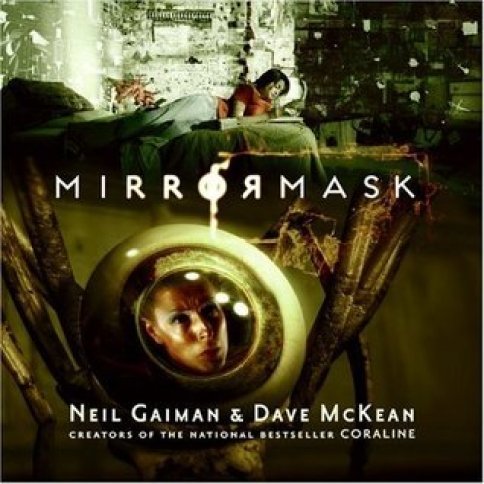
Synopsis of Mirrormask
Helena is about to embark on a most amazing journey.
Raised in a family of circus performers, she’s always dreamed of leading a more ordinary life. But when haunting music draws her into a strange and magical realm, one where anything can happen, her real life is stolen by a runaway from the other side. Helena must rescue the realm from chaos in order to win back her own not-so-ordinary life.
MirrorMask is a breathtaking film written by bestselling author Neil Gaiman and brought to life through the vision of acclaimed artist and director Dave McKean. This original novella is Helena’s tale in her own voice, written by master storyteller Neil Gaiman and accompanied by original art by Dave McKean and images from the film; it is a stunning and magical journey.
My Thoughts
Mirrormask’s protagonist Helena leads the life of most children’s dreams. She is born into a family of circus performers. Literally, the most wished-for dream aside from astronaut for most kids. Yet, Helena dreams of a more normal life. She and her mother get into an argument as kids do with their mothers and shortly thereafter Helena’s mother is hospitalized and is found to need surgery. Of course, Helena can only blame herself. That night Helena wakes into a fever dream of sorts where the fantastical and incredible come to life.
“Sometimes, “I told him, as the darkness swirled closer and closer, “you just have to say you’re sorry.”
It’s more than that, and I think by then I knew it. It’s more than saying sorry.
It’s meaning it. It’s letting the apology change things. But an apology is where it has to begin.”
Mirrormask by Neil Gaiman
Originally Mirrormask was a movie written by Neil Gaiman and Dave McKean, and with the movies success, it was thus turned into a novel. It is surprisingly short at only 80 pages, however, the narrative of the story and visual descriptions pack a punch. Much like the movie, the book uses descriptive visual language to describe the dream atmosphere that Helena enters. It reminds me a lot of Labyrinth and Dark Crystal – Dark fantasy. All the imagery has a dark edge to it and not all is wonderful and sweet in the Mirrormask realm.
The book is great, especially if you enjoy Neil Gaiman and I do. It isn’t as good as the movie, but it is an enjoyable dark romp into the mirror realm.
Check Out Some of Our Other Stories
Review Spin the Dawn by Elizabeth Lim
Review The Audacity Trilogy by Laura Loup
Procurement
I listened to this on Scribd.
About the Author

Neil Richard MacKinnon Gaiman born Neil Richard Gaiman, 10 November 1960)[4] is an English author of short fiction, novels, comic books, graphic novels, audio theatre, and films. His works include the comic book series The Sandman and novels Stardust, American Gods, Coraline, and The Graveyard Book. He has won numerous awards, including the Hugo, Nebula, and Bram Stoker awards, as well as the Newberyand Carnegie medals. He is the first author to win both the Newbery and the Carnegie medals for the same work, The Graveyard Book (2008). In 2013, The Ocean at the End of the Lane was voted Book of the Year in the British National Book Awards.
August 26, 2021
Review – Spin the Dawn by Elizabeth Lim
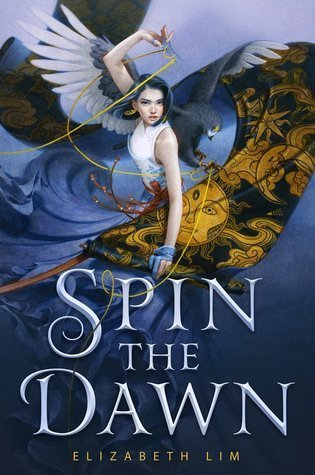 check it out here
check it out here BOOK REVIEW
spin the dawn by elizabeth lim August 26, 2021 10:00 am No Comments Facebook Twitter WordPress “Seize the wind," I whispered. "Don't become the kite that never flies.”Spin the Dawn is a Y/A fantasy novel that has been billed as “Project Runway meets Mulan,” but that description doesn’t go nearly far enough. Granted, the premise is remarkably similar — a young girl who passes as a boy in order to save her ailing father when he is summoned to serve the Emperor — but Lim’s story of a young woman posing as a candidate for the job of Royal Tailor has more depth of character, more intrigue, more adventure, and especially more magic than a Disney movie can provide.
To begin with, Elizabeth Lim gives her heroine Maia Tamarin more agency in choosing to go undercover. When the book begins, Maia’s family is in tatters. Her mother is dead, her brothers have gone off (or leave shortly after the first paragraph) to fight in the war, and almost certainly will not return. Her father’s depression has made him too ill to function, and the once-respectable family tailoring business is in shambles. Maia spends all of her time working to keep the family fed and avoiding the bullying neighbor who wants to make her his bride. When the messenger comes to take her father to the court of the Emperor to compete for the job of Royal Tailor, Maia knows that there’s no way he could win the title in his present state, but also that it would certainly mean her father’s death.
All that said, Maia is not a martyr who goes to court only to save her father, and this is what I mean when I say Elizabeth Lim gives her heroine agency. Maia loves sewing for its own sake, and she knows she’s good enough to take over the family business — if only women were allowed to do so. Maia is ambitious and smart. Before putting up her hair and dressing in her brother’s clothes, she spends some serious time thinking about her options and planning her escape. She weighs the pros and cons of going (and possibly facing death) and staying to live a life that, for her, is no life at all.
Once Maia gets to the court of the Emperor the book explodes into a colorful, magical, dangerous political intrigue. Because of course, among the nobility, nothing is as it seems. The contest is more than a contest, a dress isn’t just a dress, a pair of scissors seems to have strong opinions, and the butterflies-in-your-stomach-inducing court magician is a lot more than he seems. As her competitors for the job of imperial tailor are whittled away, Maia finds herself with less freedom rather than more. When people claiming to be friends approach her from unexpected quarters she has to decide who she can trust and who she can’t.
Spin the Dawn is full of gorgeous clothes, gritty adventure, family tragedy, and slow-blooming romance. The only complaint I had was that while a lot happens in the book, the storytelling sometimes just skims the surface of the main characters’ inner journeys. I understand why; this is a Y/A novel, and if adolescents truly are the audience, the author might not have wanted to dig deep into the emotional devastation of losing two brothers to war, or how a life of slavery might impact a person’s psyche, but to this adult reader it felt like Elizabeth Lim was sometimes giving her characters’ inner lives the short shrift.
That said, this book is full of the things I love most: culture, mythology, and magic. If you are a fan of Naomi Novik, Katherine Arden, or Sarah J. Maas, and are looking for something similar, but perhaps a little less “adult”, then this is a great alternative for yourself or as a gift for younger readers. It has all the magic, lore, romance, and adventure of those books, but is aimed at a younger, more adolescent audience.
Spin the Dawn, published in 2019, is the first book in the Blood of Stars duology. The second book, Unravel the Dusk was published in 2020. Elizabeth Lim’s most recent book, Six Crimson Cranes, is also set in the Blood of Stars universe.
Check Out some of our other reviewsReview – The Final Girl Support Group by Grady Hendrix
Review – The Past is Red by Catherynne Valente
JENNI BUCHANAN
I am a freelance writer, editor & content provider. Formerly social media manager and editor of the blog for RRKidz Reading Rainbow, I have had the privilege of interviewing a lot of cool writers and artists, working with inspiring activists, and interacting with some truly amazing readers and parents. My favorite question to ask is “What are you reading?” and if the answer is “Nothing, I’m not much of a reader.” I take it as my personal challenge to find the perfect book for that person.
When not writing or reading, I am a hiker, backpacker, nature-lover, T.V. watcher, armchair philosopher, and story addict. I am also (if you’re interested) a member of the board of directors for Pacific Reentry Career Services, and for One Spark Academy.
If You Liked This - Please Share the Love
August 25, 2021
Review – The Past is Red by Catherynne Valente
 check it out here
check it out here BOOK REVIEW
the past is red by catherynne m. valenteREVIEW BY RYAN HOWSE
August 25, 2021 10:00 am No Comments Facebook Twitter WordPress “Actors are liars. Writers, too. The whole lot of them, even the horn players and the fortune-tellers and the freaks and the strongmen. Even the ladies with rings in their noses and high heels on their feet playing violins all along the Pier and the lie they are all singing and dancing and saying is We can get the old world back again.”The Past is Red is Catherynne Valente’s novella-length sequel to her short story, The Future Is Blue (also included with this book.) It follows Tetley Abednego, the most hated girl in Garbagetown.
The Future is Blue started for a climate change anthology by Jonathan Strahan, called Drowned Worlds. One of the questions that anthology asked was, “What kind of stories would we tell in the new world created by the climate crisis?”
Valente’s response: Well, we’ll tell exactly the same kinds of stories we do now. Exactly the same kind of story we always have, through every apocalypse: the fall of Rome, the Black Death, Gilgamesh’s flood, the Warring States, all of it, the many times and ways in which the world has ended. We’ll tell stories about being born and falling in love and fighting with their families and hoping for something better and dying, because that’s what humans do and it won’t even take very long before that drowned world is just the world, the absolutely normal and even beautiful landscape of everyday life that, for the children and grandchildren of the end of civilization, will never have been any different.
The Past is Red is a slice of life in this post-apocalyptic scenario. The only safe place for humanity to live any longer is Garbagetown, which is just the real-world Great Pacific Garbage Patch made significantly larger. This massive pile of garbage drifts through the ocean, with humans claiming different pieces of it for their own territories—Candle Hole, Electric City, Pill Hill, Winditch, Matchstick Forest. The small parts of how people live on Garbagetown were fascinating—how wedding customs would change, how they ate, how they used what we would throw away.
There’s a place in Toyside where you can pull one big tangled ratking of a string and a mountain of dolls scream at you with a sound like the death of joy while saltwater pours out of their mouths. I’ve done it twice. It’s the best.
The Past is Red is a book with voice. Tetley Abednego is funny, cynical, insightful, emotional, and it all coalesces perfectly. She is both an optimist and a realist, and it never conflicts. She’s fiercely protective of Garbagetown, even though it’s never treated her well. She was largely neglected as a child, but her decision at the end of the short story The Future is Blue means that she wakes up every day to new slurs painted on her door. Anyone in Garbagetown is legally allowed to abuse her, though not kill her, and her response is “Thank you for your instruction.” Mostly she just waits for them to tire of it so she can go back to doing what she likes.
But she hates us, and what we did to our future.
They’re all dead, so none of their rules kissed them goodnight with a story or whatever you were going on about just then. Seems like someone should have thought of a rule that goes Do Not Fuck Your Only Planet To Death Under Any Circumstances. Seems like that should have been rule number one.
The dual plots of the book include her marriage to King Xanax, a man who uncovered what the various pharmaceutical pills in all their washed-up bottles do, and her discovery of a piece of our technology that can talk to her, with a limited artificial intelligence. Both of these stories collide, but the meeting of these as plot points feels perfunctory, while the thematic points raised by both those plot-lines are far more fascinating.
The Past Is Red ends, much like The Future is Blue, with Tetley making a decision that she believes will help her people without letting anyone else in on her secret.
The Past is Red is brilliant, both furious and delighted, bursting with life and voice and setting, and my favorite book I’ve read this year.
Review Originally Appeared in Grimdark Magazine
Check Out some of our other reviewsReview – The Final Girl Support Group by Grady Hendrix
Ryan Howse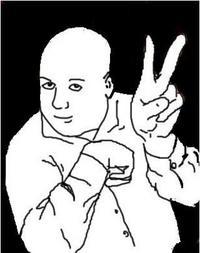
I’m funnier without context.
Okay, you want context.
I’m a mid-30s nerd, married, with two kids. Also two cats–Cathulhu and Necronomicat.
I like, in no particular order, tabletop gaming, board games, arguing over books, ancient history and religion, and puns.
I’m unconundrum on reddit.
August 24, 2021
Interview With Author Paul Tremblay
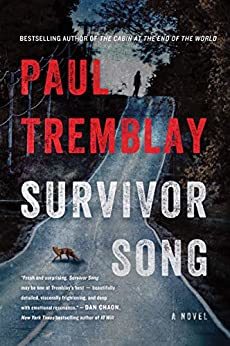 Paul Tremblay "...As a reader, I connect with more personal stories. Even for a math person like me, the numbers can become too big, too faceless, too numbing in scope. Focusing on one person or one household’s story often grounds or humanizes an event. Or maybe put in another way, all our stories are small, and I mean that in an intimate, humbling, and beautiful way. The awe and horror of the world is how we’re fated to be continually caught within the gears of events beyond our control. And, so, now what? No really, I want to know. What do you do now? What does one person do when they’re caught in the middle of the maelstrom, whether the maelstrom be a super rabies outbreak, economic disaster, zealot-eyed home invaders, or even the cruel will of the universe. I find both horror and hope in those individual stories..."
Paul Tremblay "...As a reader, I connect with more personal stories. Even for a math person like me, the numbers can become too big, too faceless, too numbing in scope. Focusing on one person or one household’s story often grounds or humanizes an event. Or maybe put in another way, all our stories are small, and I mean that in an intimate, humbling, and beautiful way. The awe and horror of the world is how we’re fated to be continually caught within the gears of events beyond our control. And, so, now what? No really, I want to know. What do you do now? What does one person do when they’re caught in the middle of the maelstrom, whether the maelstrom be a super rabies outbreak, economic disaster, zealot-eyed home invaders, or even the cruel will of the universe. I find both horror and hope in those individual stories..." Paul Tremblay has won the Bram Stoker Award, British Fantasy, and Massachusetts Book awards for his work in the horror field. His novels horror novels include The Cabin at the End of the World, Disappearance at Devil’s Rock, A Head Full of Ghosts, Survivor Song, and the story collection Growing Things. He is also a crime novelist with the Mark Genevich series.
Paul was kind enough to sit down with me for the crossover issue of Grimdark Magazine and chat about the horror genre in general, the unreliable narrator in horror, and his newest novel, Survivor Song.
[BWG] You have a master’s degree in mathematics from the University of Vermont. How did you get from mathematics to writing? Are there creative similarities between the two?
 [PT] One of the last classes I took as an undergraduate was an English/Lit 101 kind of class to fulfill a humanities requirement. That class and Joyce Carol Oates’s story “Where Are You Going? Where Have You Been?” sparked a little pilot light of reading in me. A few months later, Lisa (my wife), bought me The Stand by Stephen King for my birthday, which ignited that pilot light into a flame in a furnace. (Um, work with me, here.) Yeah. Anyway, I went off to UVM, and in my free time I read all the King books I could get my hands on. From there I branched out to Peter Straub, Shirley Jackson, Clive Barker, and more. After two years, I earned my master’s by the skin of my teeth, but I also had an inexplicable itch to try writing some short stories.
[PT] One of the last classes I took as an undergraduate was an English/Lit 101 kind of class to fulfill a humanities requirement. That class and Joyce Carol Oates’s story “Where Are You Going? Where Have You Been?” sparked a little pilot light of reading in me. A few months later, Lisa (my wife), bought me The Stand by Stephen King for my birthday, which ignited that pilot light into a flame in a furnace. (Um, work with me, here.) Yeah. Anyway, I went off to UVM, and in my free time I read all the King books I could get my hands on. From there I branched out to Peter Straub, Shirley Jackson, Clive Barker, and more. After two years, I earned my master’s by the skin of my teeth, but I also had an inexplicable itch to try writing some short stories.
Higher levels of mathematics require creativity. I never got there, though, in math. That said, I think my math background helps with some of the analytic aspects of writing, my constantly asking questions of the story and their characters, sort of like programming in a binary 0 or 1 language. Every choice you make in a story is a 0 or a 1 and it leads to the next choice and the next.
[BWG] Two of your first novels, The Little Sleep and No Sleep until Wonderland, feature a narcoleptic detective, Mark Genevich. The stories have been described as hardboiled crime noir. What inspired these? Are you a fan of hardboiled crime stories like Dashiell Hammett and Raymond Chandler?
[PT] While my first and foremost love is horror fiction, I am a fan of noir/hardboiled, particularly Raymond Chandler, but also Sara Gran, Will Christopher Baer, and Liz Hand’s Cass Neary series. The Little Sleep started with an image of a big city PI in his office and a beautiful woman walks in—the stereotype of a detective story—but her case is bizarre. She holds up a hand and bandages are wrapped around the bases of her fingers. She says someone stole her fingers and replaced them with someone else’s. When I first had the idea, I thought I would do a PK Dick kind of noir story, but didn’t get anywhere with it. Later, when I researched sleep disorders (I had an acute sleep apnea that resulted in surgery) and stumbled across narcolepsy and hypnagogic hallucinations, I knew the woman’s fingers weren’t really stolen and my PI was dreaming. The books spooled out from there, with Mark himself being the ultimate mystery of the novels.
[BWG] Who is P.T. Jones? How did you arrive at that nom de plume?
[PT] That guy owes me money!
Stephen Graham Jones and I co-wrote a now out-of-print YA novel called Floating Boy and the Girl Who Couldn’t Fly. It’s SF/F or F/SF (depending upon how shoddy you think our science was). It was an absolute pleasure to work with Stephen, who is kind and generous and beyond talented and hard-working. At the end we decided to Brundlefly our names into P. T. Jones and let that guy take all the blame.
[BWG] Your books have a way of leaving the reader unsettled. There is nothing straightforward about how the stories take place. Have you always been drawn to horror that leaves you questioning your interpretation of things?
[PT] Thank you, and the short version: yes!
Memory, identity, and reality are more malleable than we like to think they are, and I’m fascinated by those cracks within things and within us; those liminal spaces our imagination and hope and fear try to fill. Existence itself is ultimately ambiguous, right? Or at least its end is: what happens when/after we die? You can think you know or believe you know, but you (me included) don’t and can’t really know. I think most horror stories poke and probe at that final unanswered question, even without having to directly ask it.
[BWG] Your novels have a very intimate nature to storytelling. Rather than the grandiose big picture, you tell stories that look into a smaller section of humanity. It is a doctor trying to help pregnant women during an outbreak, two loving fathers facing tough choices, or a reality television show of a family who is possibly descending into madness. What attracts you to such intimate stories versus writing something more all-encompassing?
[PT] The all-encompassing thing intimidates me as a writer, frankly.
As a reader, I connect with more personal stories. Even for a math person like me, the numbers can become too big, too faceless, too numbing in scope. Focusing on one person or one household’s story often grounds or humanizes an event. Or maybe put in another way, all our stories are small, and I mean that in an intimate, humbling, and beautiful way. The awe and horror of the world is how we’re fated to be continually caught within the gears of events beyond our control. And, so, now what? No really, I want to know. What do you do now? What does one person do when they’re caught in the middle of the maelstrom, whether the maelstrom be a super rabies outbreak, economic disaster, zealot-eyed home invaders, or even the cruel will of the universe. I find both horror and hope in those individual stories.
[BWG] Two of your novels are being adapted to film, Cabin at the End of the Woods, and Head Full of Ghosts. How do you feel knowing that your stories are being made into another medium?
[PT] When the novels were first optioned it was very exciting of course, and it remains exciting. But. Also. There’s a lot of waiting. Most optioned things don’t get made. Like mine won’t get made. But I hope they do. Unless the films are bad, then ask me this question again. I joke (mostly). I’m cautiously optimistic. In the case of A Head Full of Ghosts, which is a book about influence and the horror genre, I’m excited to see what someone else’s interpretation or twist on that story would be. For Cabin, my hope is the prospective filmmaker(s) hew closer to the text, as I imagined the book as a stage play when writing it. I feel very protective of some of those characters.
[BWG] Tell me about the Barretts from Head Full of Ghosts. Their predicament was scary as hell.
[PT] It was my hope that readers would find the Barretts to be flawed but tragic and humane figures. The story is told from the point of view of the youngest daughter, Merry. She was eight years old when her parents allowed a reality TV crew to document an attempted exorcism of Marjorie, who is fourteen, and exhibiting symptoms of schizophrenia. John and Sarah were desperate enough economically to say yes to the show and the exorcism. The novel is a mix of family drama and ambiguous horror.
For so many of us, the childhood realization that your parents aren’t in control, cannot always keep you safe, and do not know what is best for you in every situation is a horrifying but human discovery. I think that’s partly why family drama mixes with horror so well.
[BWG] In Head Full of Ghosts, there is a doubt, a psychological horror that pervades the novel. Do we know what we think we know? It keeps the readers off-balance. Are there other books that influenced you in this style of storytelling?
[PT] I already mentioned the story “Where Are You Going, Where Have You Been?” and it’s a brilliant ambiguous story dripping with dread and menace. Specific to A Head Full of Ghosts, two novels that inspired my main characters Marjorie and Merry were Speed Queen by Stewart O’Nan and We Have Always Lived in the Castle by Shirley Jackson. Both novels dwell in a liminal space, but take very different approaches to the material.
Otherwise, I’m a sucker for novels/stories that skew and play with perspective and reality and ontology. Books like House of Leaves (Mark Danielewski) and Come Closer (Sara Gran).
[BWG] You had a pandemic novel come out, Survivor Song, during an actual pandemic. What was that like? It had a lot of plot points in it that seemed almost prophetic.
[PT] It was a strange experience to say the least. In the months leading up to the release I found myself apologizing to people who had read or would read the book, which was and is ludicrous, but that reflected the stew of fear and emotions I was dealing with, that all of us were dealing with.
Since I get asked a lot about the timing of finishing the book and pandemic: I turned in my final copyedits for the novel to my publisher in early November 2019. I think the parts that feel the most ‘prophetic’ are due to the information I gleaned from my sister, Erin. At the start of the novel, I wanted to learn what a local hospital’s response to an epidemic might look like, and I leaned on Erin, who is a nurse at one of the largest hospitals in Boston. Her experience with a brief (in the United States) brush of prepping for a possible Ebola outbreak in 2014 made it into my book in the form of a text exchange between nurses and Dr. Ramola Sherman. As far as forecasting that the Trump administration would be woefully unequipped to handle a pandemic and there being rampant misinformation regarding my fictional virus, I don’t think either was hard to predict. If anything, I underestimated the depths of ineptitude and how mainstream virus and now vaccine conspiracies would become.
[BWG] You chose rabies as the disease vector in Survivor Song. The infected reminded me of the dog in Stephen King’s Cujo. Did you do a lot of research into how rabies would affect the human body?
[PT] Yes, though most of the research was a happy accident prior to my having an idea for the book. When I walk my dog, I tend to listen to audiobooks, and at least a year before I had the idea for Survivor Song I listened to/read Rabid: A Cultural History of the World’s Most Diabolical Virus because, why not? I had no idea how awful and strange the virus was. All I knew (or thought I knew) was foaming mouths and giant needles jabbed into your stomach.
In July 2018 I had the what-if that sparked the novel. I can’t tell you the what-if because it spoils the book. But, I wanted to write a somewhat realistic zombie story, or zombie-adjacent story, and rabies fit the bill. I then re-read the rabies book and found gobs of rabies info online as well. Yes, I said ‘gobs.’
[BWG] Natalie and Ramola have an authenticity to their characters. You have a switching point of view between the two of them. However, most of Natalie’s character is shown through her recordings to her unborn child. Why did you choose to express Natalie’s character this way?
[PT] Thank you. I wanted the bulk of the story to be from Ramola’s point of view as I ultimately ask her character the most difficult questions of the book. I wanted to have some of Natalie’s voice and POV in there as well, but I didn’t want the two characters swapping chapters. I also didn’t want the responsibility of telling the readers what it felt like to be eight and a half months pregnant. I obviously don’t have any experience with that. Natalie’s recordings for her child aren’t about what is happening to her in the moment but are instead these intimate moments between a mother/parent and a child they haven’t met yet. I hoped the weight and import of those one-sided conversations would be meaningful to her character but also build suspense in a way, too.
[BWG] Natalie and Ramola’s story takes place in real-time, over 8 hours. What were the challenges of writing in this type of time frame?
[PT] The most challenging part was attempting to make each moment realistic and (hopefully) plausible, while balancing the action of the story with more quiet, reflective times. Also, trying (and likely failing) to keep the flashbacking to a minimum. Though when I did have flashbacks I wanted to keep them purely relevant to the moment in the story.
Most of the writing for me is a feel thing, honestly. I really don’t know what the hell I’m doing most of the time (don’t tell anyone), but I trust when it feels right.
[BWG] Finally, what are you reading right now? Have you read anything lately that was amazing?
[PT] I am currently listening to the audiobook Empire of Pain: The Secret History of the Sackler Dynasty by Patrick Radden Keefe. It’s about the Sackler family and the billions they’ve made in pharmaceuticals, most recently with creating and distributing, and marketing Oxycontin. It’s harrowing, infuriating stuff. I’m also reading Twilight Zone by Nona Fernandez, a novel about the trauma of living in post-Pinochet Chile and it’s also quite harrowing. Later this summer, keep an eye out for Build Your House Around My Body by Violet Kupersmith. An epic, decade-hopping ghost story in Vietnam. My favorite of 2021 so far.
The interview originally appeared in grimdark magazine
Buy Paul's Books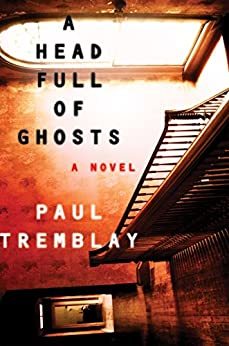

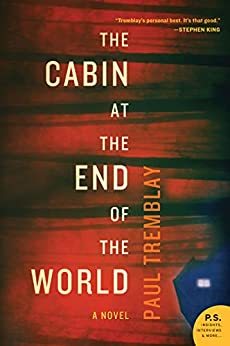 Check Out Some Of Our Other interviews
Check Out Some Of Our Other interviews Interview – Kristyn Merbeth Author of the Nova Vita Protocol
Interview – Author Grady Hendrix
August 23, 2021
Review – The Audacity Trilogy by Laura Loup
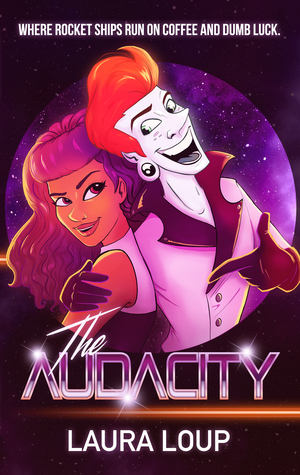 check it out here
check it out here BOOK REVIEW
the audacity by laura loup August 23, 2021 10:00 am No Comments Facebook Twitter WordPress “Squeeze their very souls from their bodies and then fine them for not applying for a soul-release license.”Carmen Loup recently released the third and final book in their The Audacity trilogy of sci-fi comedy novels. As a lifelong fan of The Hitchhiker’s Guide to the Galaxy – and an Adams-influenced sci-fi comedy author myself – I fell in love with the first book when it was released back in 2019. Loup perfectly captures the feel and tone of the Hitchhiker’s books, while pivoting enough to do their own thing and to keep things fresh and modern. It is a must read for any fan who is looking to scratch their Douglas Adams itch, and who didn’t really much care for Eoin Colfer’s well-intentioned technical sequel And Another Thing…
But, to get to the point, I’ve collated my reviews of the past two Audacity books below, followed by my review of the latest. I hope you consider jumping into the series, because if you do, you’re gonna have a blast.
The AudacityCarmen Loup’s The Audacity is the book I’ve been looking for for a long time.
Now, I’ve said this before, and I’m going to say it again: when people review Sci-fi/Fantasy comedies, they inevitably fall into the trap of comparing them to Douglas Adams or Terry Pratchett, because they really lack any other significant frame of reference.
… I’m going to fall into that same trap, despite my self-awareness. That’s because you can see incredibly clear strands of Hitchhiker’s Guide DNA in The Audacity. Right down to the very initial set up of the story.
But Loup takes that set up and lovingly pivots it into its own unique tale filled with bright, colorful, and snarky characters and a fun, insightful (and, indeed, inciteful) voice that rings incredibly true to an Americanized Douglas Adams (that is, lacking in British poise and restraint).
There are times in the middle where the story meanders and seems to just be taking its time in lieu of advancing a narrative, and some might find a few of the fourth wall breaking jokes to be a bit much for a novel. But Loup’s narration, descriptions, and hilarious world-building really made those concerns moot for me.
The Audacity is simply an amazing sci-fi comedy from start to finish and feels like a love letter to The Hitchhiker’s Guide to the Galaxy and, indeed, to all its fans. This, and anything else Loup touches, is an instant buy for me. We’ve been lacking in these kind of books for years, and, frankly, I need more.
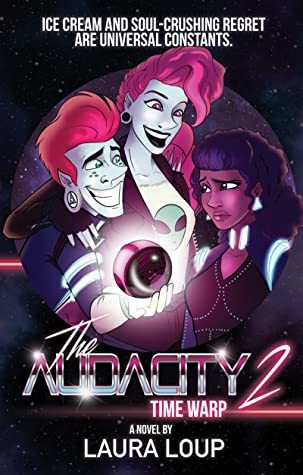 check it out here
check it out here BOOK REVIEW
the audacity 2 - time warp by laura loup August 23, 2021 10:00 am No Comments Facebook Twitter WordPressCarmen Loup’s The Audacity was one of my favorite books of 2019, being the spiritual follow-up to The Hitchhiker’s Guide to the Galaxy that I’d been looking for for a while. It had everything: fun and clever humor, weird concepts, and outlandish, but endearing characters.
I’m happy to report that The Audacity 2 continues the trend. It picks up a few months after the first book ends and we get to catch up with Xan, May, and a host of new, delightful characters as they race to try to stop Chaos once again in a thoroughly enjoyable adventure.
As much as I enjoyed the book, I can’t help but feel a little disappointed that the plot revolved once again around Chaos’ evil schemes, and was hoping to see something a bit different and a bit more fresh. Her plan in this book involves time travel (not a spoiler because just look at the subtitle) and is a little more tough to put a finger on than in the first book. We also don’t really see much of her, and that makes her feel like more of a physical obstacle than a developed character.
All that being said, while Chaos and her plans don’t feel super detailed, a lot of that time gets spent on the relationships and humor between the existing and new characters, which is where this book really shines. The humor and style is zanily consistent with the first book and just oozes the same snark, imagination, and charm that I love.
Overall, a very enjoyable read, and I’m eager to see what’s in store for Xan and May in the 3rd installment, although I hope it will expand their world a bit more.
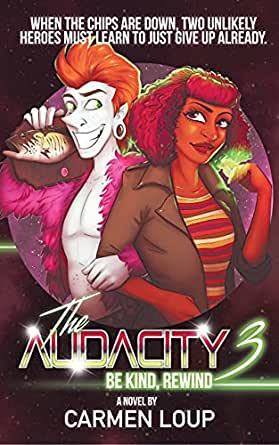 check it out here
check it out here BOOK REVIEW
The Audacity 3: Be Kind, Rewind by laura loup August 23, 2021 10:00 am No Comments Facebook Twitter WordPressIt’s been about 2 years since I read the first Audacity book, and what a hell of a two years it’s been. At this point in time, after everything that’s happened, the third and final Audacity book is exactly what I needed.
If you’ve read the first two, you know how they read, and The Audacity 3: Be Kind, Rewind is happily more of the same. It is queer, technicolor, sci-fi joy swaddled within the confines of a book. Xan, May and the wonderfully fun characters from the first two books, return, of course. But this time, the titular ship of the saga is nowhere to be found and goddess of Chaos is no longer the primary antagonist. Instead, it’s the glowing green fungus that has taken Xan’s brain hostage and won’t stop growing until he’s dead.
All of this combines into much more personal stakes than either of the previous adventures. And after hanging out with characters I could call my fun, bizarre friends for two books, this transition made the book all the more compelling.
But don’t worry, all the wacky galactic fun of the past two books is present as well, albeit tinged with the subtle melancholy of mortality – both for Xan and the series itself, since it was halfway through the book that I realized this was going to be the endcap of the trilogy.
The ending, which I won’t spoil here, is, like the rest of The Audacity series, very much in line with the tone and style of its obvious direct ancestor The Hitchhiker’s Guide to the Galaxy. It mashes up the mysteries of space-time and the philosophy of existence with bizarre absurdism and mundane, yet compelling interpersonal relationships.
But where Douglas Adams’ seminal work always had a sense of nihilistic cynicism about it to the (quite) bitter end, The Audacity eschews that approach entirely and instead opts for hopeful, loving optimism.
And, in no slight to Adams, I think these days, we could use much more of the latter than the former.
Read The Audacity series. You surely won’t regret it.
Check Out some of our other reviewsAugust 22, 2021
Review – Pawn’s Gambit by Rob J. Hayes
 Beth Tabler 5/5
Beth Tabler 5/5  pawn's gambit by Rob J. Hayes Purchase Here
pawn's gambit by Rob J. Hayes Purchase Here Rob J. Hayes, Pawn's Gambit About“Beauty is emotion, good or ill. Pain or happiness or fear or love. Beauty is in the experience.” ―
The Mortal Techniques novels are a series of stand-alone stories that can be read entirely independently, set in the award-winning Mortal Techniques universe.
Even Pawns can checkmate Kings.
Once a century, the gods hold a contest to determine who will rule from the Jade Throne. Each god chooses a mortal champion, and the fate of heaven and earth depends on the winner.
Once a world-renowned strategist and general, Yuu made one wrong move, and the Steel Prince paid for her mistake with his life. Now on the run, she relies on her wits to evade royal bounty hunters. But what if there is a way to bring back her dead prince?
On a playing board full of heroes, warriors, assassins, and thieves can Yuu survive long enough to even learn the rules of the game, let alone master it?
Pawn’s Gambit is a stand alone story set in the award-winning Mortal Techniques universe. It’s a wuxia adventure filled with heroes, gods, spirits, and magic.
Pawn’s Gambit by Rob J. Hayes is one of my most anticipated releases for 2021, and it lived up to the hype. Last year I had the pleasure of reviewing the Wuxia epic Never Die, it was my first introduction to Rob as a writer, and I got to say that his books are fast becoming some of my favorites.
“Beauty is emotion, good or ill. Pain or happiness or fear or love. Beauty is in the experience.”
From my review, “Never Die is centered around Ein…and has been sent on a quest from God. ..For Ein’s mission to succeed, the mysterious and powerful Emperor of Ten Kings must fall. To succeed in his quest, Ein must walk barefoot across the cities, mountains, and rivers of the countryside and never don footwear. Ein must select champions to fight the Emporer for him, and these champions must die first so that their souls are tethered to Ein.” Never Die was the first installment in the Mortal Techniques world. Pawn’s Gambit takes place many years after Never Die and is not a sequel, although there is some fun scattered Easter eggs for the readers of Never Die to enjoy.
Instead, Pawn’s Gambit is a stylized Wuxia epic with some steampunk and game theory thrown in that takes place in the same world of Never Die. It has the same rules and techniques, which we learn more about, but it is about redemption and finding peace.
“Yuu shrugged. “Throw her a tea party or something, sure. Whatever works.”
Pawn’s Gambit’s plot centers around the protagonist Yuu, also known as The Art of War. Yuu is a former famous military strategist, who wears a white mask at all times, and is known for pulling out military wins in the direst of situations. Her ability to see all the angles of a fight are legendary. Though these wins often come at the high costs of human lives lost. Her grandmother, the previous incarnation of Art of War, trained Yuu in all the aspects of war and strategy. However, unlike Yuu’s grandmother, Yuu cannot separate herself from the battles. She feels the pain of the deaths that she helped cause, even if she won the war. They weigh heavy on her heart.
“Failure was always due to a lack of focus. With enough attention and preparation, no outcome could not be predicted, and no situation could not be overcome.”
Five years ago, Yuu made a choice that cost her the thing she held most dear but won the battle. The repercussions of that choice caused her to drop the mask and leave batteling forever. She no longer wanted to be The Art of War. Now five years later, we find Yuu sitting in a bar, getting drunk as she does every night, fleecing men for coin in battles of chess. It is below someone who was once The Art Of War, but at this point, all she wants to do is forget and drink till she feels the pain of the loss no more.
Meanwhile, in another realm, the Gods are having a battle of their own. Every 100 years, the gods have a contest to see who will sit upon the throne for the next 100 years. The God who is currently sitting on the throne, Batu, is the God of War. He has brought nothing but devastation and horror to the land of men for the last 100 years. He cannot help it; it is his nature. But it is time for a change.
“The first step toward winning is knowing which game you are playing.”
The contest is this: Each God participating must give up a thing they hold most dear. The objects are placed throughout the land, and champions, chosen by the benefactor God, must go out and find those objects. Whoever has the most items wins. It is a grand scavenger hunt. Natsuko, the Goddess of missed opportunities, has chosen her champion, Yuu. Yuu is not thrilled with this.
Yuu is an interesting character. She is one of those types of characters that isn’t likable, but she could care less about being liked. She has a core of inner strength that you can see even when readers start the story, and we see Yuu at her very lowest point. But this story is her redemption arc, and what that redemption actually is, is up to the reader. Hayes doesn’t concretely define what redemption looks like for Yuu. I think that makes her a stronger and more interesting character. She has layers and different parts to her. Is she the strategist, the friend, the woman, the human? I am not sure, but I know that the various facets of Yuu are tested thoroughly throughout this story.
The dialog for the story is funny and very human. Hayes can bring out a situation’s nuance and doesn’t need to pound the reader with heavy-handed dialogue. This made me relate all the more to Yuu and the supporting characters she finds along the way to help her. These characters, seen on the superb Felix Ortiz and Shawn T. King cover, help her in different ways. The journey is not the same as Never Die, but there are similar teamwork elements that carry through.
Pawn’s Gambit is a worthy addition to the Mortal Techniques series and a follow-up to Never Die. It is really good, and I am so excited that I got to immerse myself in this Wuxia inspired world with great characters, exciting fight scenes, and heartfelt dialog once again. This story asks some big questions and challenges what redemption is.
You should come and take this journey with Yuu; you will not regret it.
This review originally appeared on Grimdark Magazine as part of a tour with Fantasy Book Critic
Check Out My Other ReviewsReview – Battle Ground by Jim Butcher (Dresden Files #17)
Review – The Ikessar Falcon by K.S Villoso
First Chapter, First Paragraph; Never Die by Rob J. Hayes
If You Liked This - Please Share the Love Beth Tabler
Elizabeth Tabler runs Beforewegoblog and is constantly immersed in fantasy stories. She was at one time an architect but divides her time now between her family in Portland, Oregon, and as many book worlds as she can get her hands on. She is also a huge fan of Self Published fantasy and is on Team Qwillery as a judge for SPFBO5. You will find her with a coffee in one hand and her iPad in the other. Find her on: Goodreads / Instagram / Pinterest / Twitter
Review – Never Die by Rob J. Hayes
 Review Book Reviews August 22, 2021 10:00 am 13 Comments Samurai, shinigami, vengeful spirits, and an impossible quest.
Review Book Reviews August 22, 2021 10:00 am 13 Comments Samurai, shinigami, vengeful spirits, and an impossible quest.  Beth Tabler 4/5
Beth Tabler 4/5 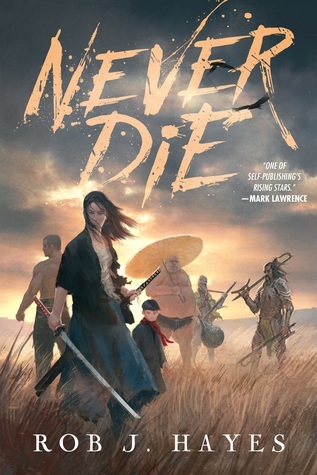 Never Die by Rob J. Hayes Purchase Here
Never Die by Rob J. Hayes Purchase Here Rob J. Hayes, Never Die About“It takes a lifetime of evil to be a villain, and only one moment of good to be a hero.”―
The Mortal Techniques novels are a series of stand-alone stories that can be read entirely independently, set in the award-winning Mortal Techniques universe.
Samurai, shinigami, vengeful spirits, and an impossible quest.
The Emperor of Ten Kings has plunged Hosa into war, and the gods are angry.
When the god of death gives Ein a mission to kill the immortal emperor, he knows he can’t do it alone. He needs allies, heroes who will fight for him. How else can an eight-year-old boy hope to do the impossible?
Whispering Blade, Iron Gut Chen, the Century Blade, and Flaming Fist. These are all names of legend. And the god of death has given Ein a way to bind them to his cause. There is only one catch. In order to serve him, they must first die.
Never Die is a stand alone set in the world of Mortal Techniques. It’s a wuxia adventure filled with samurai, shinigami, heroes, and vengeful spirits.
Mark Lawrence, the author of the grimdark series “Broken Empire,” said this of Rob Hayes’s writing ability, “(he) is one of self-publishing rising stars,” and he is unquestionably right. This story is the epitome of fantasy; it pits dark against light, has epic fighting scenes, heroes that are not quite perfect, and a subtle undercurrent of rye humor. Everything that makes a fun fantasy story.
“She whispered a prayer for those she slain, knowing full well the stars were deaf, and those men didn’t deserve it anyway.
Never Die is centered around Ein. A boy who is not quite right and has been sent on a quest from God, a death God and Ein’s mission to succeed the mysterious and powerful Emperor of Ten Kings must fall. Also, to succeed in his quest Ein must walk barefoot across the cities, mountains, and rivers of the countryside and never don footwear. He must also select champions from myth and legend to fight the Emporer for him, and these champions must die first so that their souls are tethered to Ein.
“I’m not most children he said somberly.”
The champions are where Hayes really excelled in his story writing. Often when reading fantasy characters, an author tends to muddle together different character tropes to be some kind of quasi trope hybrid and usually they are similar from story to story. That isn’t the case here. First of the champions is Itami Cho, AKA Whispering Blade the fastest and quietest warrior in the kingdoms. A spoken word from her can shatter walls and tear apart bodies. Secondly, Emerald Wind is a bandit who is a real self-centered bastard of the story. He is able to blink in and out of existence moving from place to place often popping behind enemies to pierce them through their back. I find that his unabashedly disreputable character is refreshing and adds an excellent counter-balance to Itami Cho because not all heroes are good people. Thirdly we have Iron Gut Chen. He has an impenetrable skin and an impenetrable ego. He needs to consume massive amounts of wine to be happy and reminds me of a jolly sumo wrestler. Lastly, Bingwei Ma rounds out Ein’s literal dream team. Bingwei is the greatest living master of wushu ever to live. He uses no weapons and has never lost a fight.
“Sorry. I am still learning how to use a needle. Flesh is quite different to cloth.”
As you can see, this is a team of heroes not cut from the traditional cloth. Each also has a weakness: one is good but tortured in the case of Ikami, One is gregarious but full of himself in the case of Chen, and you have one that is chaotic with a streak of goodness, buried deeply in Emerald wind. Bingwei Ma does not know how to lose and has never left his valley, his issue is gullibility. During the journey of the story, there is the day to day peril of existing. Not enough food to eat or angry villagers punctuated with bouts of violence and battles. This keeps the frenetic pace of the story plausible and comfortable. Hayes knows as a writer how vital pacing is, that the slow moments in a story are just as important as the wild crazy ones. As these heroes move towards their overall goal of slaying the Emporer, I found myself cheering for this band of miscreants and heroes. Will they succeed in their quest? Will they tear themselves apart first. Can Ein keep the band together through the threat of not giving them a full life again? The questions are answered beautifully in the denouement of the novel. It takes the reader to places that I had no idea where coming. I absolutely loved and appreciated the ending.
I am new to the worlds of Rob Hayes and his wonderful fantasy novels. But I am sure as hell going to stay around and make myself comfortable. If his other books are one-tenth as good as this one is, I am in for a treat. Come for the story of Never Die but stay for the heroes.
Check Out My Other ReviewsReview – Battle Ground by Jim Butcher (Dresden Files #17)
Review – The Ikessar Falcon by K.S Villoso
If You Liked This - Please Share the Love Beth Tabler
Elizabeth Tabler runs Beforewegoblog and is constantly immersed in fantasy stories. She was at one time an architect but divides her time now between her family in Portland, Oregon, and as many book worlds as she can get her hands on. She is also a huge fan of Self Published fantasy and is on Team Qwillery as a judge for SPFBO5. You will find her with a coffee in one hand and her iPad in the other. Find her on: Goodreads / Instagram / Pinterest / Twitter



